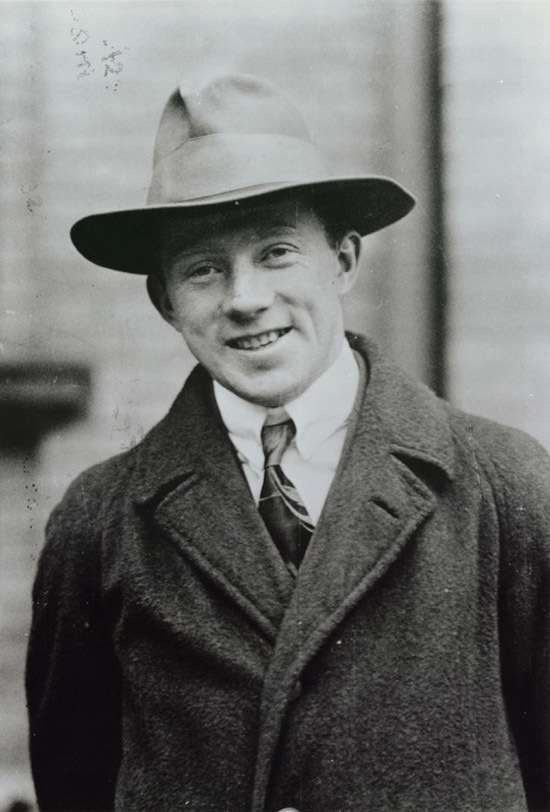| << Chapter < Page | Chapter >> Page > |
How does knowing which slit the electron passed through change the pattern? The answer is fundamentally important— measurement affects the system being observed . Information can be lost, and in some cases it is impossible to measure two physical quantities simultaneously to exact precision. For example, you can measure the position of a moving electron by scattering light or other electrons from it. Those probes have momentum themselves, and by scattering from the electron, they change its momentum in a manner that loses information . There is a limit to absolute knowledge, even in principle.

It was Werner Heisenberg who first stated this limit to knowledge in 1929 as a result of his work on quantum mechanics and the wave characteristics of all particles. (See [link] ). Specifically, consider simultaneously measuring the position and momentum of an electron (it could be any particle). There is an uncertainty in position that is approximately equal to the wavelength of the particle. That is,
As discussed above, a wave is not located at one point in space. If the electron’s position is measured repeatedly, a spread in locations will be observed, implying an uncertainty in position . To detect the position of the particle, we must interact with it, such as having it collide with a detector. In the collision, the particle will lose momentum. This change in momentum could be anywhere from close to zero to the total momentum of the particle, . It is not possible to tell how much momentum will be transferred to a detector, and so there is an uncertainty in momentum , too. In fact, the uncertainty in momentum may be as large as the momentum itself, which in equation form means that
The uncertainty in position can be reduced by using a shorter-wavelength electron, since . But shortening the wavelength increases the uncertainty in momentum, since . Conversely, the uncertainty in momentum can be reduced by using a longer-wavelength electron, but this increases the uncertainty in position. Mathematically, you can express this trade-off by multiplying the uncertainties. The wavelength cancels, leaving
So if one uncertainty is reduced, the other must increase so that their product is .
With the use of advanced mathematics, Heisenberg showed that the best that can be done in a simultaneous measurement of position and momentum is

Notification Switch
Would you like to follow the 'College physics' conversation and receive update notifications?